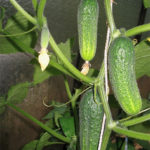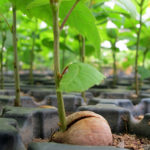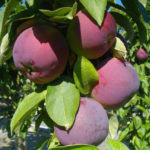Genoa lemon variety
Not so long ago, this variety was considered rare, it was included in the collection of only "advanced" citrus growers. Now the situation has changed, Genoa can be safely attributed to common lemons. Nevertheless, it is still considered a variety that is difficult for a beginner to cope with. The reason is the increased demand for lighting, some moodiness in the care.
"Biography" of our hero
Genoa turned out to be a real lover of moving! There is evidence that the first trees of this plant came to the United States in 1875 from plantations on the outskirts of Genoa (Italy). Apparently, it was known in the Apennines long before this date, but it was the American breeders who did a good job on the variety, bringing its characteristics to modern conditions.
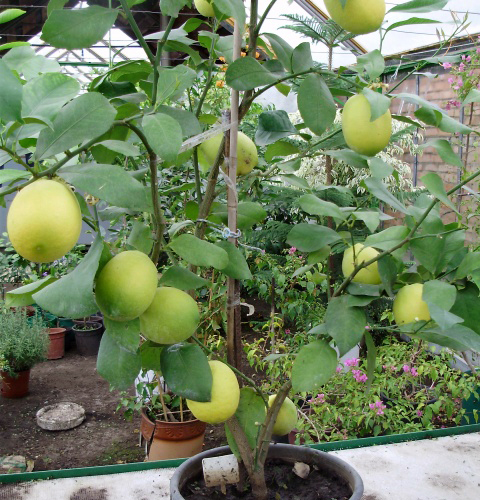
Painstaking work was carried out in nurseries in California, with the involvement of lemons of the "Eureka" variety. Until now, these varieties are so close that only specialists can sometimes distinguish them.
It so happened that already in the 20th century, the improved Genoa came to the citrus plantations of Chile. He liked the local climate and soil: in Chile, he became more compact, leafy and frost-resistant. And after such metamorphoses, he returned to Europe again, but not without kin like fifty years ago, but as a real hero, with regalia and achievements.
Interesting! Preserved information that this citrus came to the Soviet Union before the Second World War from Florida.
Description of the variety
And this tree has a lot of achievements! Let's just remember that by their taste, Genoa fruits are considered one of the tastiest among the lemon variety! But - everything is in order.
Crown characteristics... The tree is rather weak, although some reference books classify it as medium-sized. In greenhouses and in the open air, it grows to a maximum of three meters, in an apartment - no more than one and a half; most often, growth is limited to one meter.
The shape of the crown is symmetrical, compact, almost does not require formation. A big plus is the almost complete absence of thorns. The branches are densely covered with large dark green leaves. Among other varieties, few can compete with our hero in the density of foliage. The shape of the leaves is oval, ovoid, often lanceolate. The leaves are attached to the twigs with short petioles, young leaves and the tops of growing shoots are light purple in color.
As already mentioned, in order for the crown to look good, the tree needs a lot of light. In the room, Genoa grows successfully only on windows with a south or southwest orientation.
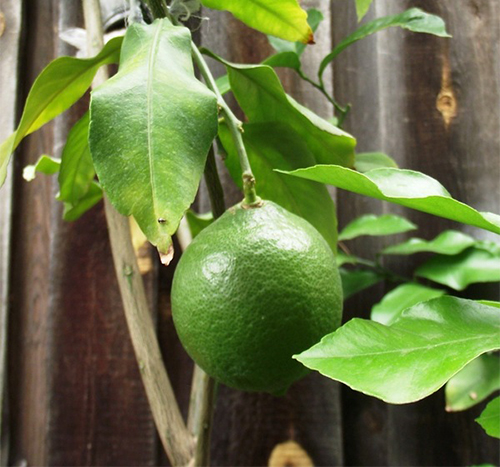
Description of flowers... Five-petal flowers, traditional for the culture, of medium size, about 5 cm in diameter. The color of the petals outside, as well as the color of unblown buds, is anthocyanin (eggplant). Flowering occurs at 4 - 5 years of age. The tree is capable of blooming several times per season. As a rule, flowers, ovaries, and ripening fruits can be simultaneously observed against the background of dense foliage, which gives the variety a special decorative effect.
Fruit characteristics... Genoa is considered to be one of the most productive indoor lemons. Up to two hundred fruits are harvested from an adult tree on plantations! At home, such an abundance should not be expected, but citrus growers collect 20-30 fruits from a tree.
Fruits weighing about 100 - 120 grams have an oval, slightly elongated shape. A small, sharp nipple is visible at the tip of the lemon. Another important feature is the presence of a barely distinguishable ribbed neck at the base of the fruit.
The color of the peel is light yellow, sometimes with a barely noticeable green.
Interesting! The peel of this citrus variety is devoid of characteristic bitterness, has a sweetish, pleasant taste, and can be eaten with the pulp. On the one hand, this is an undeniable advantage. At the same time, the peel does not separate well from the pulp, which is a commercial disadvantage.
The taste of the pulp is pleasant, sweetish, with a typical lemon sourness. A feature of the variety is the presence of a dense film between the slices.
Instead of an epilogue
Thus, Genoa can be considered an excellent tree for home breeding.Its commercial value has been diminished for two reasons:
- Poor peelability.
- The presence of a large number of dense films inside the fetus.
Only in Chile and Argentina the variety became widespread as an industrial crop.
But, you see, the above arguments cannot be considered a disadvantage for home cultivation. After all, we repeat, the fruits of this tree are considered one of the most delicious! In addition, do we adore indoor lemons because of the taste?
